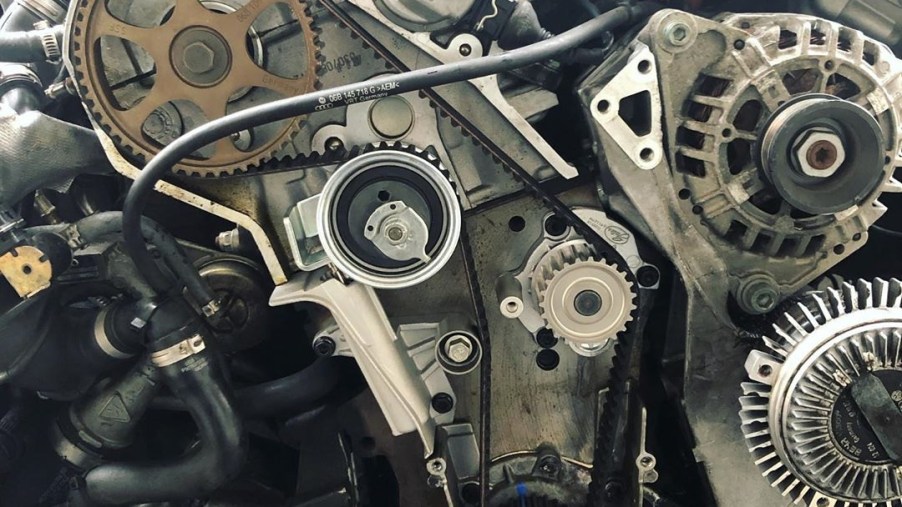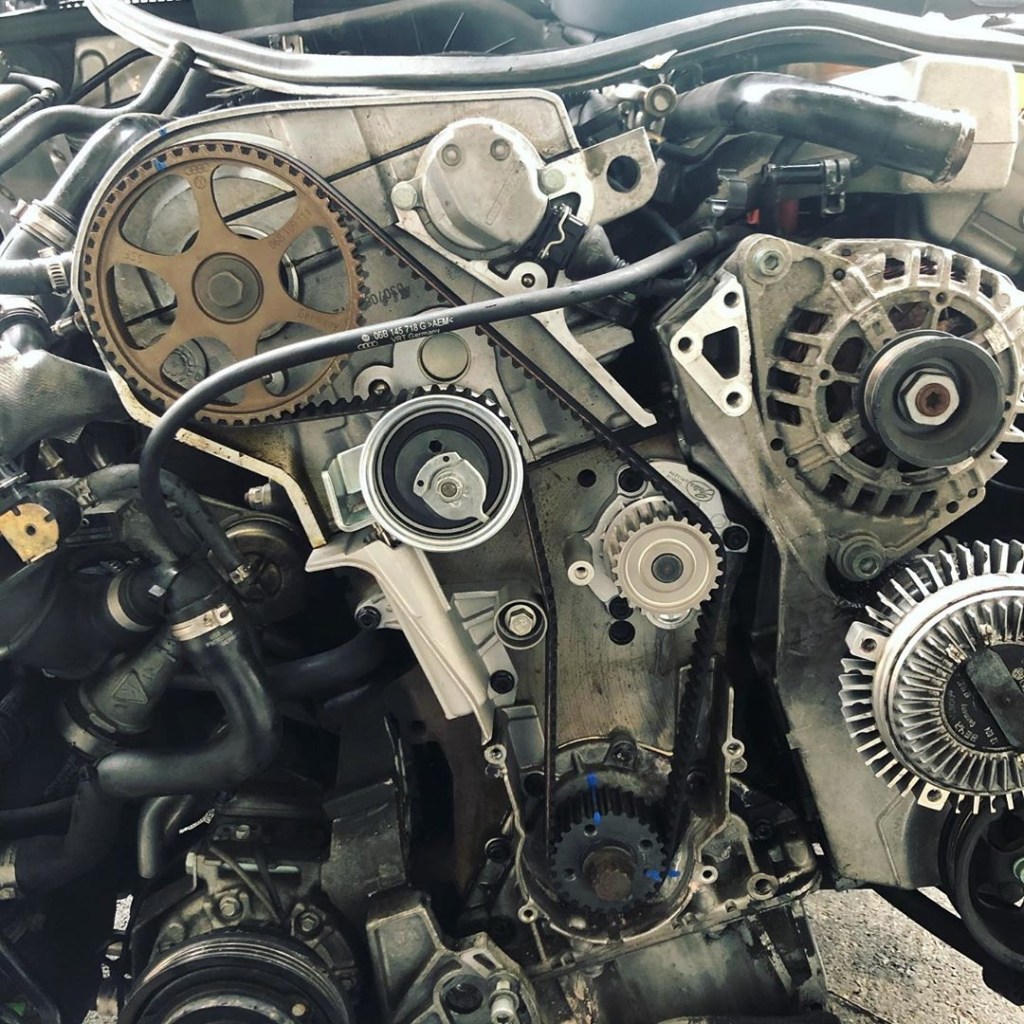
Why You Need to Change Your Timing Belt and Water Pump Together
When it comes to vehicle maintenance, most understand the basics. Change the oil, check the brakes, regular washes, etc. But not every vehicle on the road works the same way. A diesel engine doesn’t work like a gasoline engine, for instance. Also, some wear items, like the clutch are hidden from easy sight. Or, they have such long service intervals that owners can forget about them. That is until something goes wrong. One of these is the timing belt. And, oftentimes, when you go to replace it, it’s recommended you replace the water pump, too. Here’s why.
What does the timing belt do?

The timing belt is a key component in keeping your car’s engine running. For the engine to make power, its pistons have to rotate, and the combustion chamber’s valves open and close. The pistons are attached to a crankshaft, which sends power through the transmission and differential to the wheels. Meanwhile, the valves move thanks to a rotating camshaft.
However, this operation requires precise timing. If the intake valve stays open too long, air will escape, and power drops. And if too much air escapes, the mini-explosion which creates the power won’t happen. It’s even worse, Jalopnik explains if you have an interference-type engine. These engines have valves that open further into the combustion chamber, for improved power and efficiency. But, if the piston and valves are out of sync, the piston could collide with the extended valve.
So, the timing belt links the crank and camshafts to keep them synced. Alternatively, your vehicle may have a timing chain rather than a belt. The belt is quieter and doesn’t have to be lubricated. But the chain is made of metal, which lasts longer. Regardless, a belt typically lasts no more than 100,000 miles, while chains can last up to 150,000 miles.
Is the timing belt different than a serpentine belt?
Note, the timing belt isn’t the same as the serpentine belt. True, both are connected to the crankshaft. However, the timing belt is located inside the engine. The serpentine belt is found externally, and drives many of the car’s accessories, like the alternator, power steering pump, and A/C pump.
But, as NAPA explains, the timing belt sometimes pulls double-duty. Not only does it keep the crankshaft and camshaft(s) synced, it sometimes also drives the water pump.
Why replace the water pump and timing belt?
Technically, replacing the water pump with the timing belt isn’t strictly necessary, Central Automotive reports. If your coolant isn’t leaking and your engine isn’t overheating, the water pump is still fine. However, Carfax explains, there are some reasons why replacing the water pump and timing belt together is a good idea.
For one, the water pump’s lifespan is typically 60,000-100,000 miles. And if the belt fails, whether due to simple age, or the failure of a tension pulley or bearing, the water pump will likely fail along with it.
Also, as with the Porsche Cayman’s RMS, the water pump isn’t easy to get to. In fact, ClickMechanic and NAPA explain, you can’t get at the water pump without first exposing the timing belt. So, if you’re already changing the belt, it’s very little added work to replace the pump simultaneously.
Can you replace a timing belt yourself?
There are some signs that the timing belt is on its way out. Your engine will misfire, or fail to turn on at all. This might be preceded by a ticking noise coming from the engine bay. In addition, the gasket separating the timing cover and engine block may fail over time, causing oil to leak out.
It is technically possible to replace your car’s timing belt and water pump yourself. However, it’s a fairly involved process. And it also requires a lot of precision. Once you remove the belt, the camshaft(s) and crankshaft are free to rotate independently. So, you have to be absolutely sure to keep them aligned while you replace the belt. Otherwise, you’ll still have a poorly-operating engine—or, if it’s an interference type, a possibly broken one.
Follow more updates from MotorBiscuit on our Facebook page.


